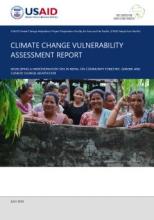Land Library
Bienvenido a la biblioteca de Land Portal. Explora nuestra amplia colección de recursos de acceso abierto (más de 74.000), que incluye informes, artículos de revistas científicas, trabajos de investigación, publicaciones revisadas por pares, documentos jurídicos, vídeos y mucho más.
/ library resources
Showing items 82 through 90 of 361.The approval of the 2004 Forest protection and Development Law was a milestone which marked the legal recognition of community forestry in Viet Nam.
This journal article discusses the importance of empowering grassroots community to facilitate the sharing of climate change and REDD+ related information, knowledge and policies discussed at the national, regional and global level to local stakeholders.
REDD+ scheme is primarily aimed at national governments and local forest managers to reduce emissions by conserving forests; at the same time, increasing investment on capacity developmen for grassroots stakeholders who are the main forest stewards provides opportunities for the grassroots actors
Almost 90 percent of the land area in the Lao People’s Democratic Republic (Lao PDR) is ‘wooded’.
This training manual has thus been developed to enhance the knowledge and skills in gender mainstreaming, including gender analysis and the integration of the findings from the analysis into the design of forestry interventions.
More than 80 percent of Nepal’s population of 30 million lives in rural areas with agriculture as their main livelihood.
Seventy percent of Indonesia’s land area (128 million ha) is classified as forest land. Estimates of the number of villages located on these lands vary from 25 000 to 33 000 with an estimated population of 50 to 70 million people.
In this context, RECOFTC and USAID Adapt Asia-Pacific have developed a framework for better understanding and assessing climate change vulnerabilities in a context of multiple competing interests in a CF landscape.
This report is part of the USAID Climate Change Adaptation Project Preparation Facility for Asia and The Pacific project and details efforts to establish a long-term demonstration site in Nepal to identify CF-CCA interventions through participatory approaches, develop proposals for priority inter









